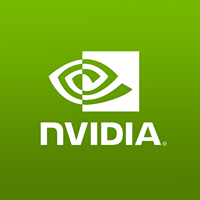Tariff Turmoil: Tech Stocks Plunge Amid Trade War Fears
April 4, 2025, 3:38 am
The tech sector is in a tailspin. Tariffs announced by President Trump have sent shockwaves through the market. Apple, the crown jewel of tech, led the charge downward, dropping more than 9%. This is not just a stumble; it’s a full-blown fall. The Nasdaq Composite, a barometer for tech stocks, experienced its worst day since the pandemic.
The announcement came like a thunderclap. A blanket 10% tariff on all imports, with specific rates as high as 49% for certain countries. The markets reacted swiftly. Apple, which relies heavily on manufacturing in China, felt the brunt. The company’s stock plunged nearly 6% in after-hours trading, setting the stage for a disastrous day ahead.
Nvidia, another tech titan, wasn’t spared. The chipmaker, which assembles its products in Mexico and Taiwan, saw its shares drop by 4%. Tesla, the electric vehicle pioneer, followed suit with a 4.5% decline. The ripples spread far and wide. Alphabet, Amazon, and Meta all suffered losses between 2.5% and 5%. Microsoft, too, took a hit, falling nearly 2%.
This wasn’t just a bad day for tech. It was a harbinger of a potential trade war. Trump’s tariffs were framed as a “declaration of economic independence.” He promised to bolster domestic production and lower prices for consumers. But the immediate reaction from the market told a different story.
The Nasdaq had just wrapped up its worst quarter since 2022, dropping 10% in the first three months of the year. Investors were already jittery. Now, with tariffs looming, panic set in. An exchange-traded fund tracking the S&P 500 fell 2.8%. The Nasdaq 100 ETF lost over 3%.
Trump’s speech praised tech giants for investing in the U.S. Apple’s commitment to spend $500 billion over the next four years was highlighted. But the irony was palpable. While the administration touted these investments, the tariffs threatened to undermine them.
The fallout was swift. Suppliers like Qorvo and Skyworks Solutions plummeted by 16% and 12%, respectively. Semiconductor stocks were not immune. Marvell Technology, Broadcom, and Lam Research all saw declines of at least 10%. Micron Technology sank more than 16%.
The tech-heavy Nasdaq Composite shed about 6%, marking its worst session in over five years. Year-to-date, the index is down more than 14%. The pain was widespread. Dell and HP, personal computer makers, tanked 19% and 15%, respectively. Dell experienced its worst session since 2018.
The global implications of these tariffs are significant. China’s Ministry of Commerce responded with a stern warning, urging the U.S. to “immediately cancel” the unilateral measures. They promised “resolute counter-measures.” This could escalate into a full-blown trade war, with both sides digging in their heels.
The tech sector is a fragile ecosystem. Companies rely on global supply chains. Tariffs disrupt these networks. Higher costs could lead to increased prices for consumers. The promise of lower prices touted by Trump may be a mirage.
Investors are left grappling with uncertainty. The market is a fickle beast. One day it soars; the next, it crashes. The tech sector, once a beacon of growth, now faces headwinds. The specter of a trade war looms large.
The timing couldn’t be worse. The tech industry was just beginning to recover from the pandemic’s grip. Now, with tariffs on the horizon, the recovery is at risk. Companies must navigate a treacherous landscape.
As the dust settles, analysts will be watching closely. The next few weeks will be critical. Will companies adapt? Can they absorb the costs? Or will they pass them on to consumers?
The stakes are high. The tech sector is a significant driver of the U.S. economy. A downturn could have ripple effects across various industries.
In the end, the market is a reflection of sentiment. Fear can drive prices down faster than any economic indicator. The tariffs have injected a dose of fear into the market. Investors are wary.
As we move forward, the question remains: How will the tech giants respond? Will they pivot, or will they dig in? The answers will shape the future of the industry.
In this volatile environment, one thing is clear: the tech sector is at a crossroads. The path ahead is uncertain. But one thing is certain—the impact of these tariffs will be felt for a long time. The storm is just beginning.
The announcement came like a thunderclap. A blanket 10% tariff on all imports, with specific rates as high as 49% for certain countries. The markets reacted swiftly. Apple, which relies heavily on manufacturing in China, felt the brunt. The company’s stock plunged nearly 6% in after-hours trading, setting the stage for a disastrous day ahead.
Nvidia, another tech titan, wasn’t spared. The chipmaker, which assembles its products in Mexico and Taiwan, saw its shares drop by 4%. Tesla, the electric vehicle pioneer, followed suit with a 4.5% decline. The ripples spread far and wide. Alphabet, Amazon, and Meta all suffered losses between 2.5% and 5%. Microsoft, too, took a hit, falling nearly 2%.
This wasn’t just a bad day for tech. It was a harbinger of a potential trade war. Trump’s tariffs were framed as a “declaration of economic independence.” He promised to bolster domestic production and lower prices for consumers. But the immediate reaction from the market told a different story.
The Nasdaq had just wrapped up its worst quarter since 2022, dropping 10% in the first three months of the year. Investors were already jittery. Now, with tariffs looming, panic set in. An exchange-traded fund tracking the S&P 500 fell 2.8%. The Nasdaq 100 ETF lost over 3%.
Trump’s speech praised tech giants for investing in the U.S. Apple’s commitment to spend $500 billion over the next four years was highlighted. But the irony was palpable. While the administration touted these investments, the tariffs threatened to undermine them.
The fallout was swift. Suppliers like Qorvo and Skyworks Solutions plummeted by 16% and 12%, respectively. Semiconductor stocks were not immune. Marvell Technology, Broadcom, and Lam Research all saw declines of at least 10%. Micron Technology sank more than 16%.
The tech-heavy Nasdaq Composite shed about 6%, marking its worst session in over five years. Year-to-date, the index is down more than 14%. The pain was widespread. Dell and HP, personal computer makers, tanked 19% and 15%, respectively. Dell experienced its worst session since 2018.
The global implications of these tariffs are significant. China’s Ministry of Commerce responded with a stern warning, urging the U.S. to “immediately cancel” the unilateral measures. They promised “resolute counter-measures.” This could escalate into a full-blown trade war, with both sides digging in their heels.
The tech sector is a fragile ecosystem. Companies rely on global supply chains. Tariffs disrupt these networks. Higher costs could lead to increased prices for consumers. The promise of lower prices touted by Trump may be a mirage.
Investors are left grappling with uncertainty. The market is a fickle beast. One day it soars; the next, it crashes. The tech sector, once a beacon of growth, now faces headwinds. The specter of a trade war looms large.
The timing couldn’t be worse. The tech industry was just beginning to recover from the pandemic’s grip. Now, with tariffs on the horizon, the recovery is at risk. Companies must navigate a treacherous landscape.
As the dust settles, analysts will be watching closely. The next few weeks will be critical. Will companies adapt? Can they absorb the costs? Or will they pass them on to consumers?
The stakes are high. The tech sector is a significant driver of the U.S. economy. A downturn could have ripple effects across various industries.
In the end, the market is a reflection of sentiment. Fear can drive prices down faster than any economic indicator. The tariffs have injected a dose of fear into the market. Investors are wary.
As we move forward, the question remains: How will the tech giants respond? Will they pivot, or will they dig in? The answers will shape the future of the industry.
In this volatile environment, one thing is clear: the tech sector is at a crossroads. The path ahead is uncertain. But one thing is certain—the impact of these tariffs will be felt for a long time. The storm is just beginning.



